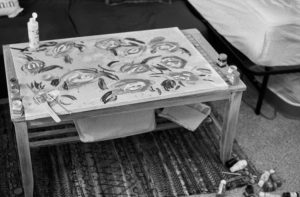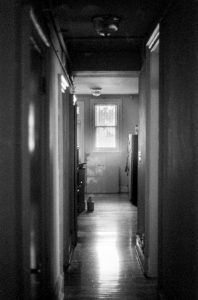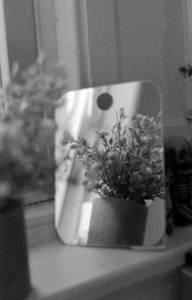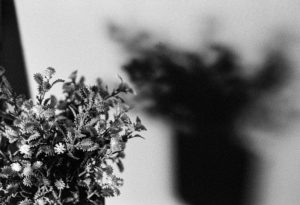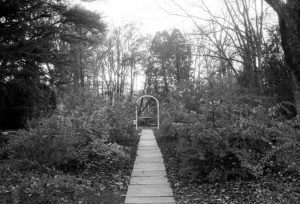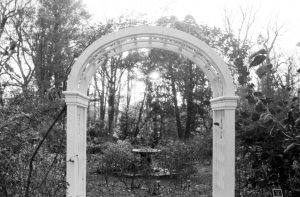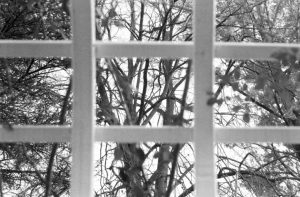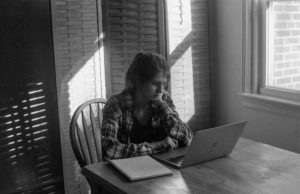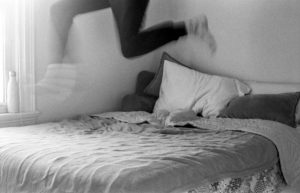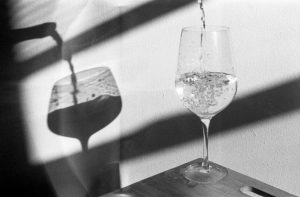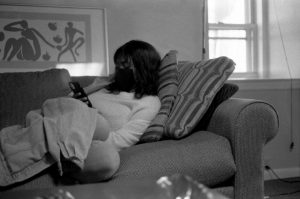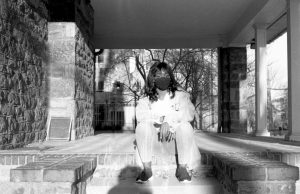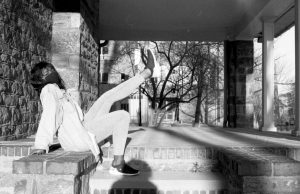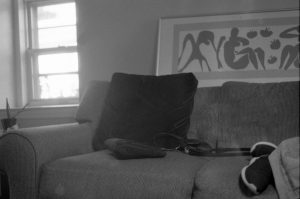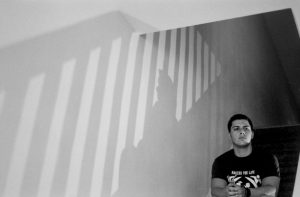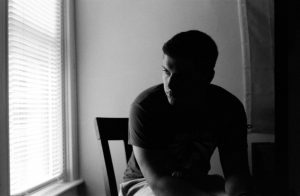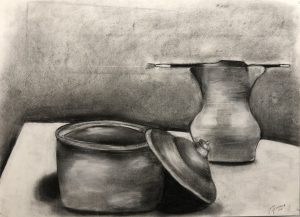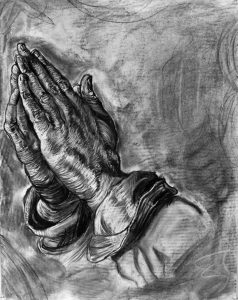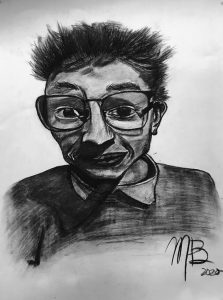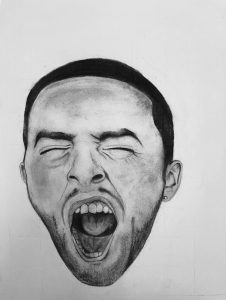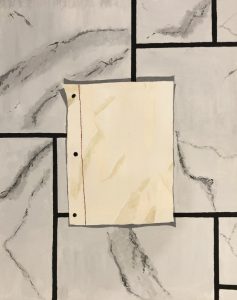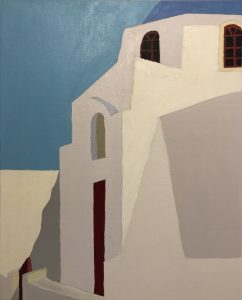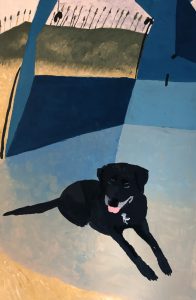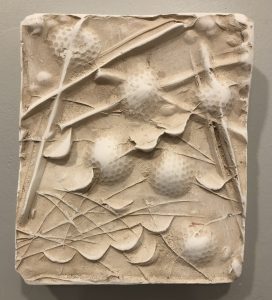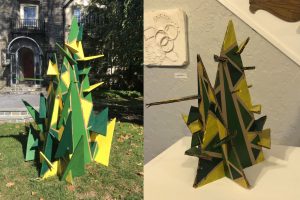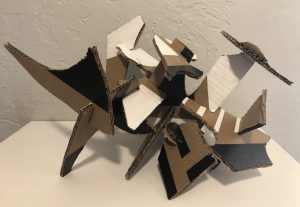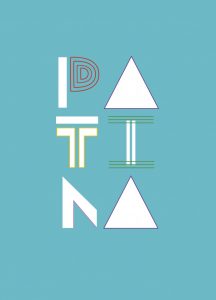The senior art majors and minors present their theses in varying mediums and themes. This exhibit is the culmination of their yearlong art capstone course. These young artists express their identities and visions that they have developed through their experiences and instruction during the course of their college careers.
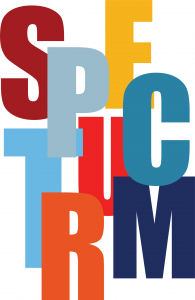
April 1 – May 16
See the recording of our virtual artist talk
from Friday, April 9, 6-7pm
Casey Clemetsen
The series “2020”, depicts real social and political events in a surreal but comprehensive way. If you were to ask anyone prior to 2020, their expectations for that year, I doubt they would mention anything that occurred. Yet, most know what has happened is very important to history. With Covid, the Black Lives Matter movement, and the contested election results, this year has become a turning point in the world and in this country. I wanted to make this work to remember how I felt during this time. I believe some of the strongest pieces of art are made in challenging times and in the future become bittersweet reminders of our own history. I want to inform and connect with others and to express these thoughts and feelings through this series. My idea of using photoshop and having images that are unrealistic, exaggerated and leaning toward science fiction, is to epitomize the idea that at times these events have felt unreal or impossible, so it only made sense to execute these images in a similar fashion. I use stark white boxes in several images to show isolation, emotion and separation. I created all of my images in the studio out of sets, which allowed me a lot of control with details, color and props incorporated. I am sharing my own, my family and my friends’ emotions during this process, making it personal.
Kayla Coan
I began photographing my family when I was young. I always loved being both behind and in front of the camera. My current series, titled “Pieces,” will be presented this April. People around me inspire me everyday and I strive to showcase the beauty and complexity of everyday life, even while in a pandemic. I am inspired by photographers Mary Frey, Asheleigh Coleman, and Sarah Hoskins. My goal is to capture intimate moments of people that I love. Pieces will be exhibited as a salon style presentation, with images of varying sizes. This series focused on the main aspects of my life; work, school, and friends, all while navigating through a global pandemic.
Alyssa Farrell
Climate change is the most pressing issue of our time. Inaction is not an option. If we do nothing, humanity will die off. We already see the effects of our rapidly warming climate in our world today. In 2020 alone, we saw an increase in wildfires, hurricanes, and other natural disasters. The concentration of carbon in the atmosphere is at an all-time high in human history at 412 ppm. In August 2020, Death Valley reported the hottest temperature ever recorded. These instances will seem insignificant if we continue down the path we are on. If we continue on our destructive path humanity will cease to exist. We are in the midst of the sixth mass extinction, brought on by our own actions. However, if we act now, we can mitigate and perhaps even begin to repair the damage we have caused.
This series uses layered, laser cut photographs of our natural world with text about the climate crisis burned into the images. I am looking to highlight the beauty of our planet and at the same time, visibly show what we are destroying. I am photographing the beauty and wonder of the planet and juxtaposing my photographs with text about the climate crisis. The text, all taken from factual sources such as the New York Times and scientific sources, like NASA, allows the viewer to learn more about the climate crisis. The images in each piece connect to a particular habitat, place, or issue. This series is meant to educate and encourage viewers to look deeper into the climate crisis.
I have always enjoyed nature and the outdoors. My natural impulse has been to photograph beautiful places. However, at the onset of the project, I was determined to talk about climate change and not simply show beauty. Artists of all sorts, from photographers to painters have attempted to showcase the beauty of nature and encourage people to care about the environment. I decided to use the shocking statistics and facts to raise awareness in the hope that viewers would further educate themselves on the issues. The reality of the climate crisis is that what we do now, whether we act or do not act, will decide the fate of humanity.
Amanda Nava
Everyone has a story to be told and their stories are significant. On a daily basis we all have moments in our lives where we are interacting and interconnecting with each other. Feeling included in this diverse network of lives that construct our society, but at the same time conserving our individual uniqueness is what spawns’ new ideas and perspectives. The works in this series of drawings and paintings deal with the representation of diversity and inclusion. I have created a visual language of colorful geometric shapes that overlap and interweave. The drawings are done with the use of colored pencil on paper and the paintings are done with acrylic paint on canvas.
The hard-edged geometric shapes represent our personal identities. The varied shapes are playfully placed to interweave and overlap with each other while creating a balanced harmonious environment. The work references our diverse similarities and differences while taking into consideration our distinct personal characteristics. The translucent paint quality conceptualizes the framework of intersectionality as it relates to people’s identities and their experiences alone and with others. The vibrant bold colors are a representation of my own Mexican heritage and embraces the traditions which make up my identity.
My aim of this work is to challenge the viewer to examine what it means to be truly diverse and inclusive. The acknowledgement of the intersecting shapes incorporates the idea that everyone of us as an individual has had experiences of confronting discrimination and oppression. In creating these pieces, I want to bring about an awareness that although we are each different from one another, we can support, respect, value and empower each other. Each of our stories matter, and for this reason, the works are designed to be shown in whichever direction one chooses them to be displayed. Every viewer is free to experience the work how they choose and generate their own awareness of a diverse and inclusive society.
Kjel Schlemmer
Traditions like Buddhism, Taoism, and Hinduism grabbed my attention and held it as I worked through the range of liberal art’s courses my english and philosophy degrees necessitated, as a student at Saint Joseph’s University. I had the opportunity to really dig into these philosophies, and as I did, I began to understand my art differently. Around the time that I was falling in love with ceramics and pottery, I was discovering a peculiar form of Buddhist aesthetics called Wabi-Sabi. As it turns out, Wabi-Sabi and ceramics are deeply and historically intertwined and I was quick to begin exploring the philosophy through my own work.
Traced back to 16th century Japan, Wabi-Sabi finds value and beauty in the imperfect. It praises things with rustic and non-uniform features in a conscious resistance to our innate gravitation towards perfection. Ceramic pieces in the style of Wabi-Sabi, like traditional Japanese tea cups, are visibly in a process of degradation and wear with the intention of representing the Zen ideals of nature, change, and individuality. I am currently exploring this combination of Wabi-Sabi and ceramics in my art minor capstone, where I hope to gain a deeper understanding of the forms and techniques of traditional Wabi-Sabi ceramics, while also developing my style and direction as a potter.
I love the idea of a process that naturally creates unique and unknown results. Entropy is a fundamental aspect of life and is a phenomenon that I embrace within my work. Everything that exists is subject to entropy and nothing ages without showing its effects. My aim is to create a body of work that relinquishes this struggle of appearances and perfection. Things have a fundamental tendency to change, to wear down. To hide from this fact is to hide from the world. My work is intended to stand as ceramic memento moris, each piece made unique and beautiful by their variances and imperfections. Authenticity is beautiful. My pieces are forthright and direct about their particularities and are intended to raise the questions like, “What are my disillusions?”, “What am I resisting that is out of my control?”, and “How can I be more authentic with myself and the world?”

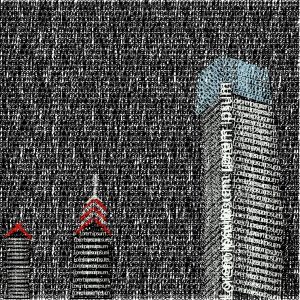
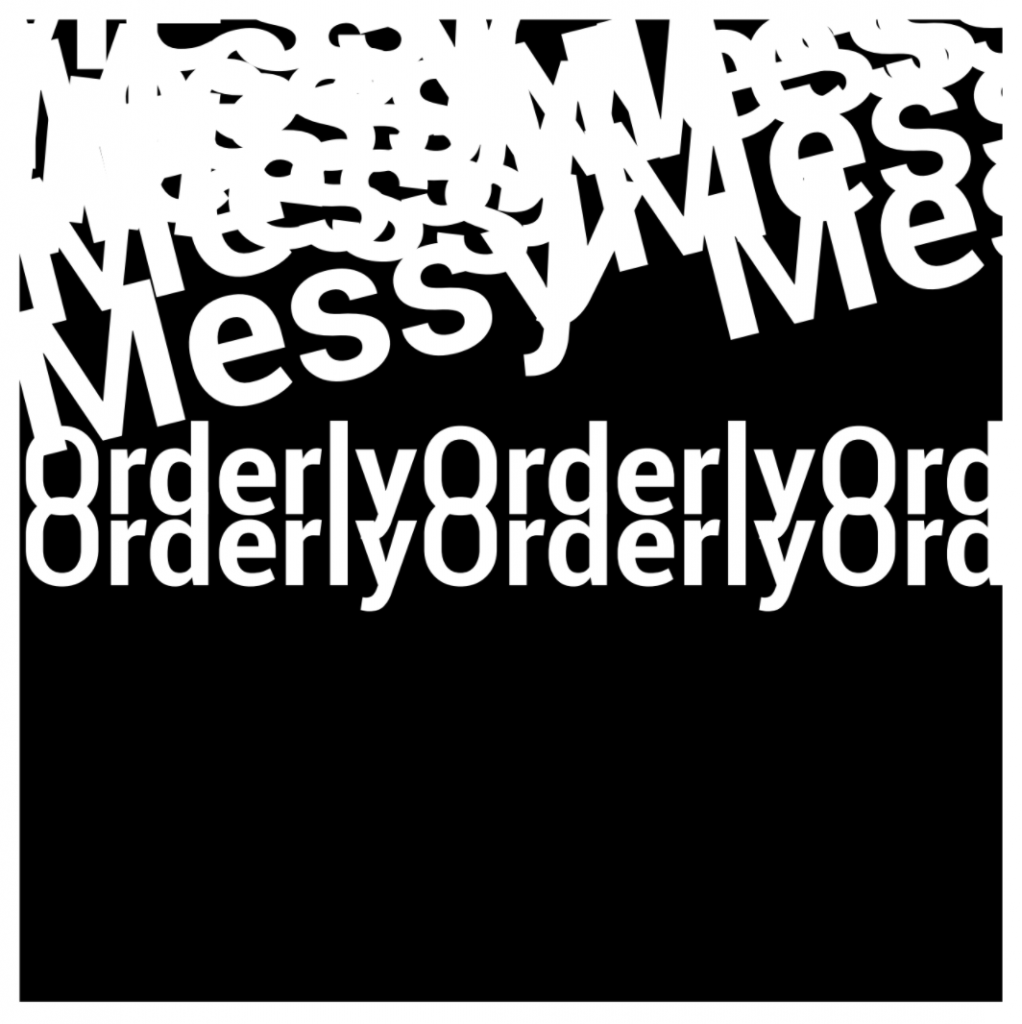
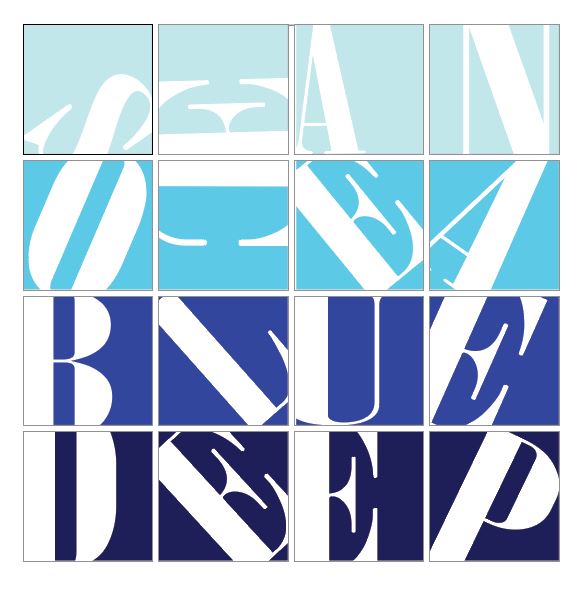
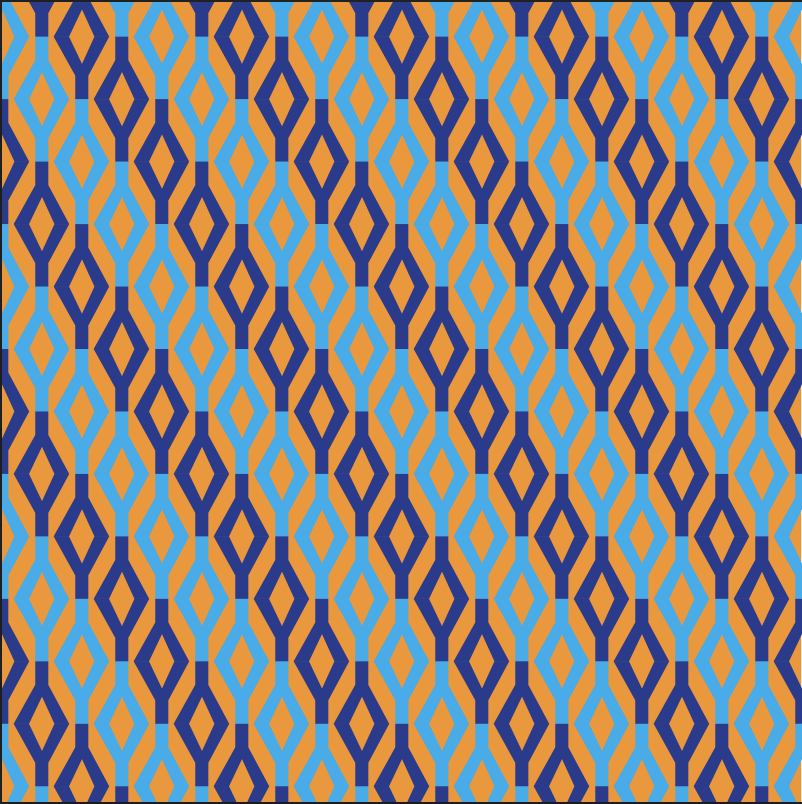
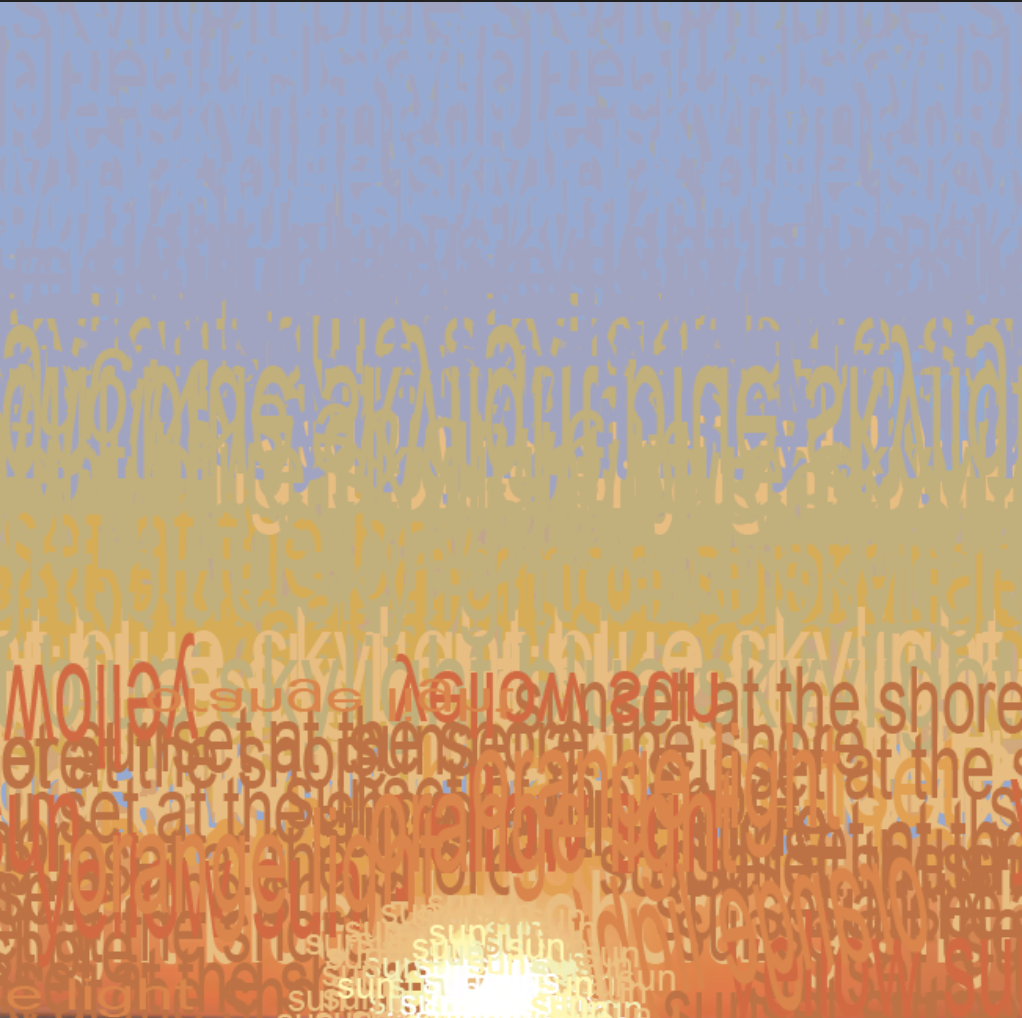
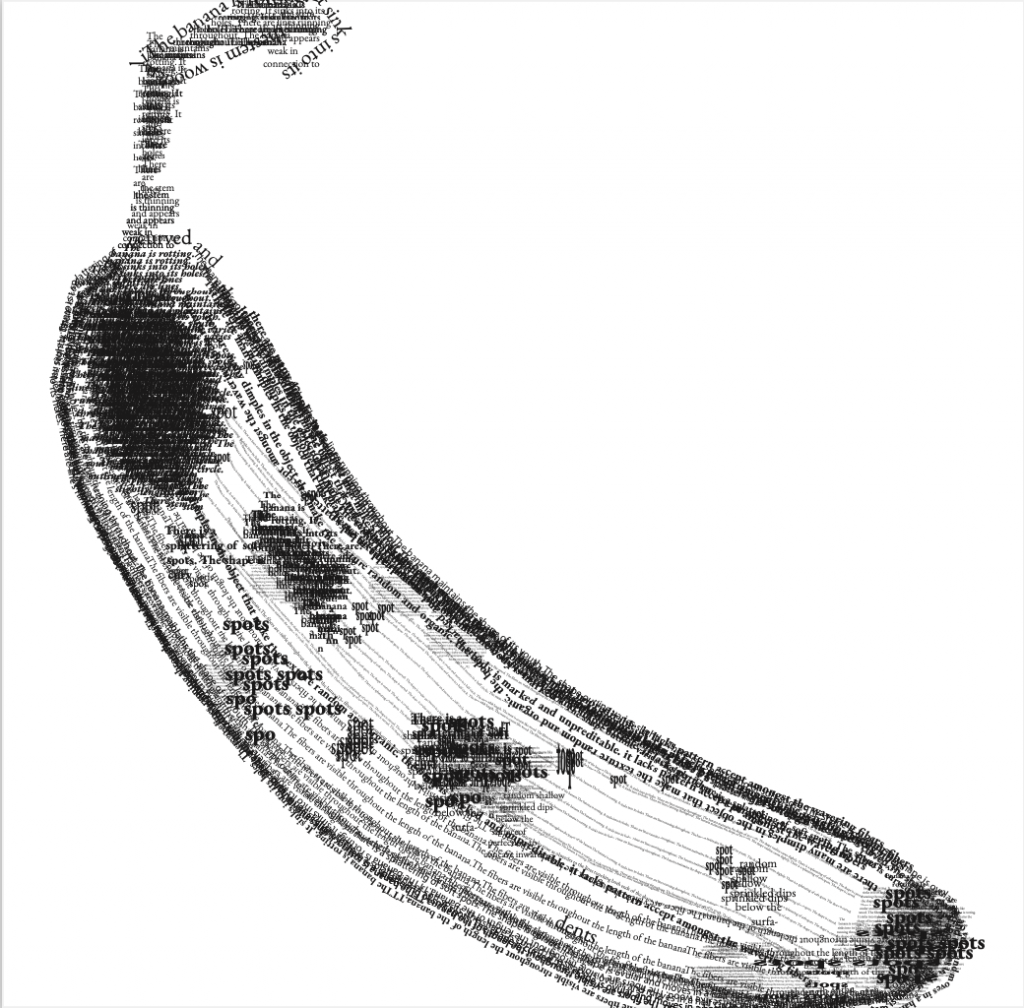
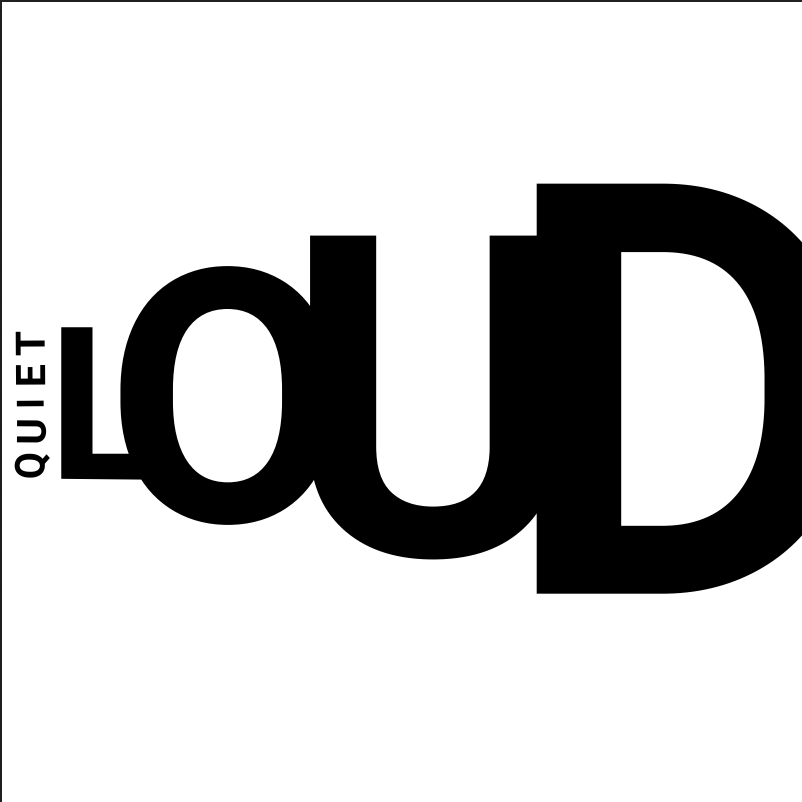


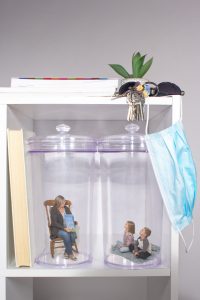
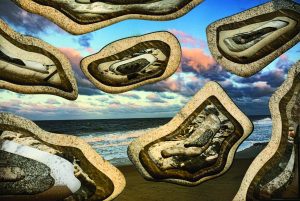
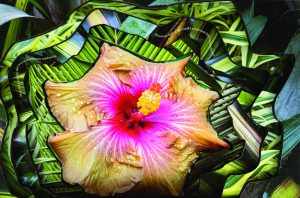
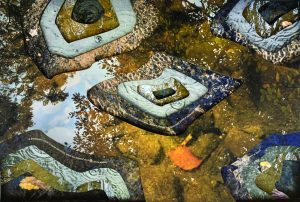
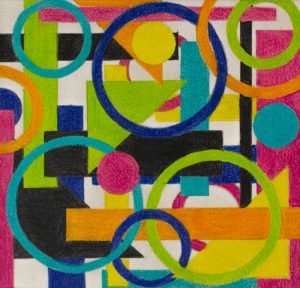
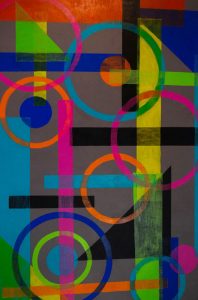
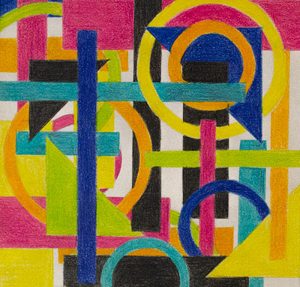
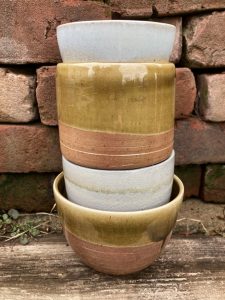
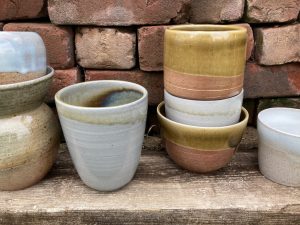
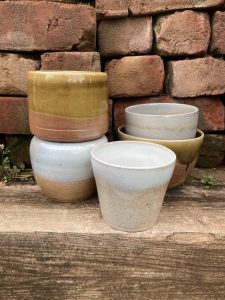
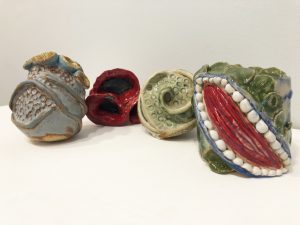
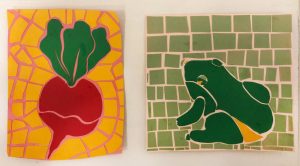
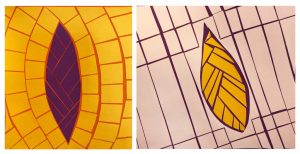
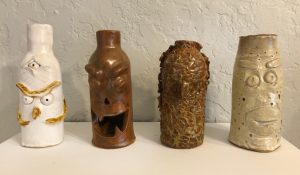
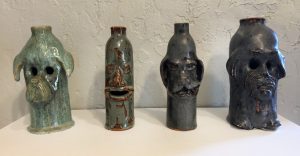
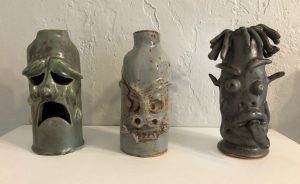
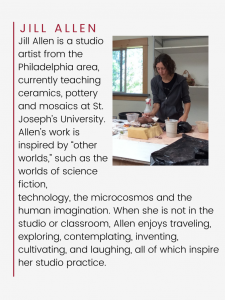

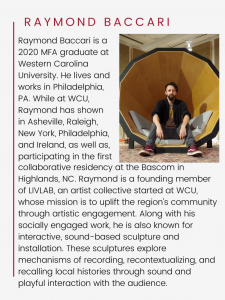

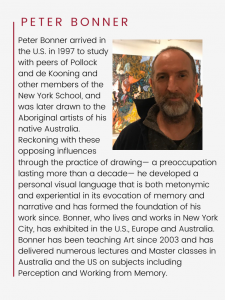
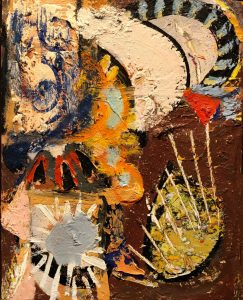
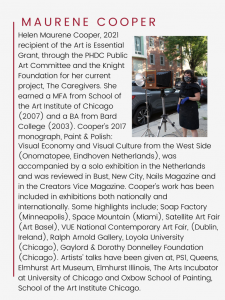
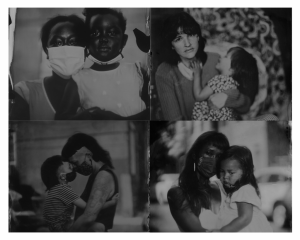
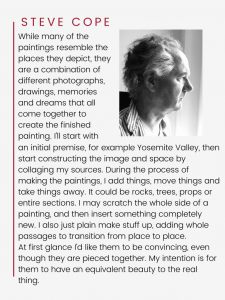
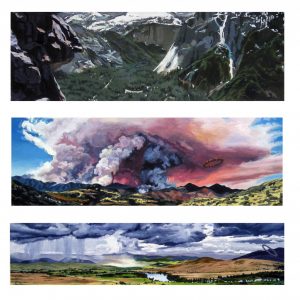
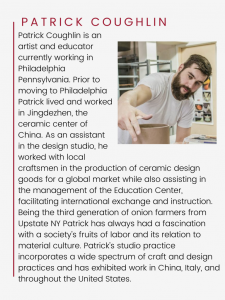
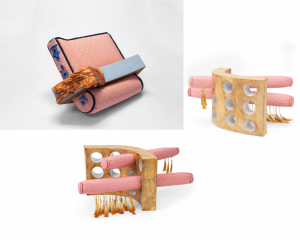

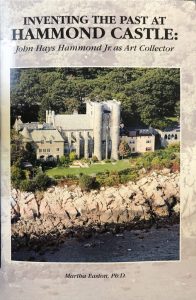
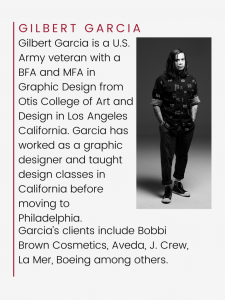
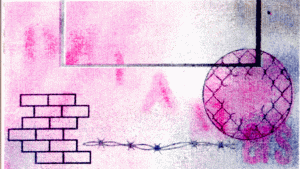
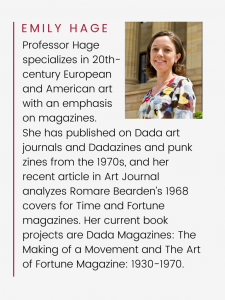
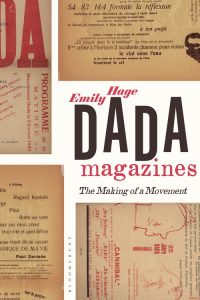
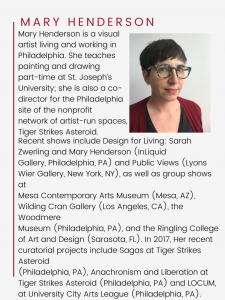
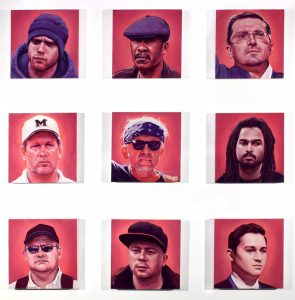
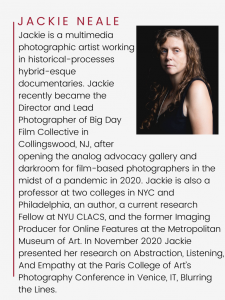
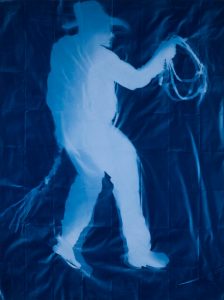
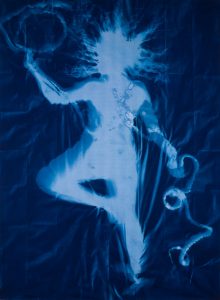
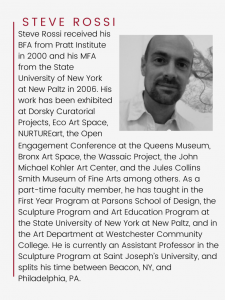
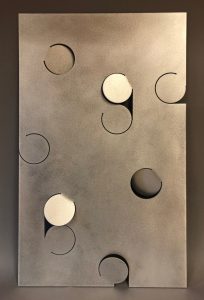
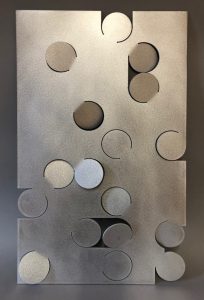
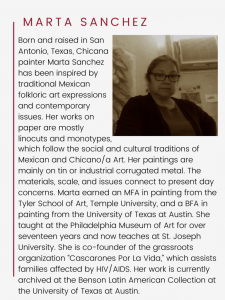

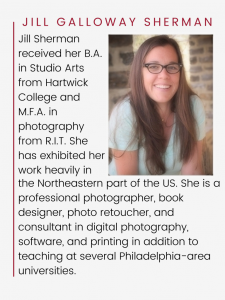
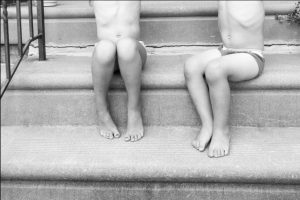
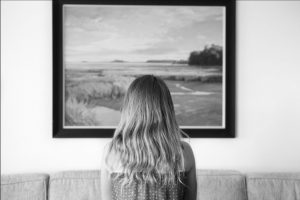
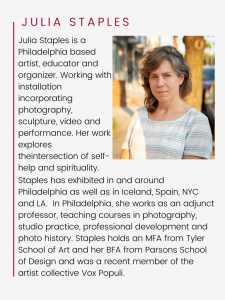

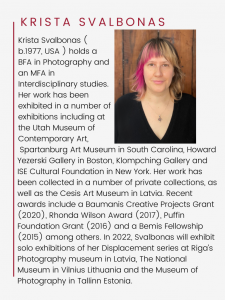
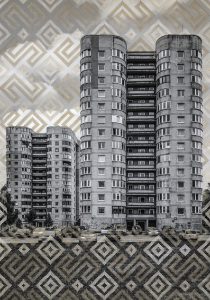
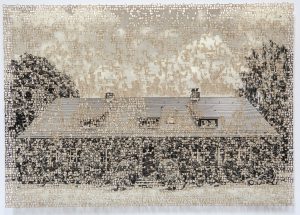
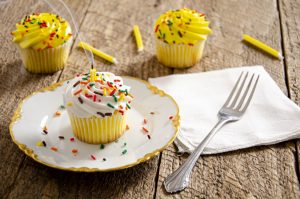
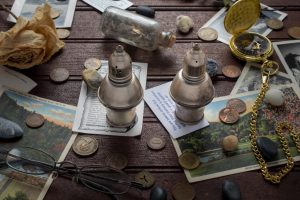
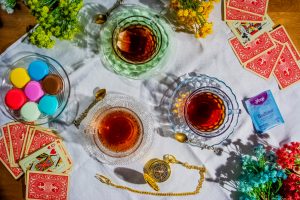
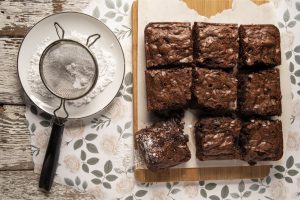
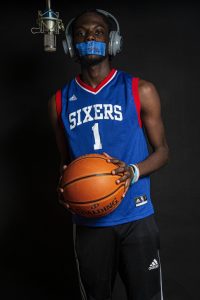
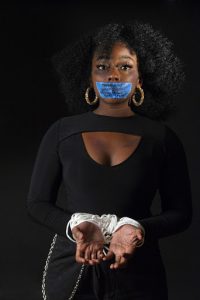

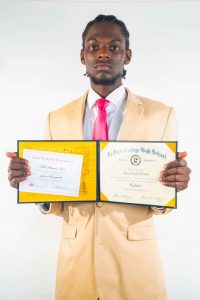

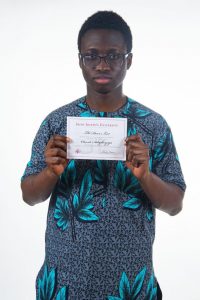

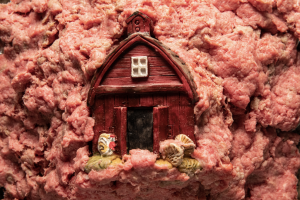
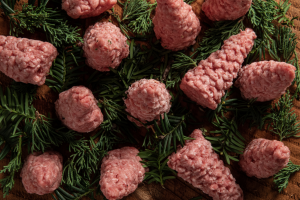
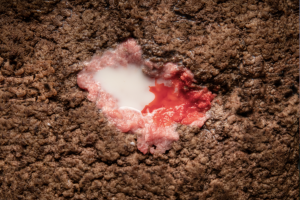
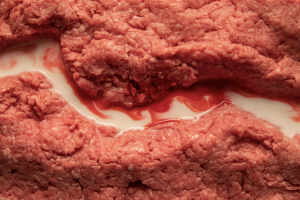
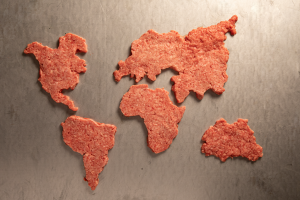

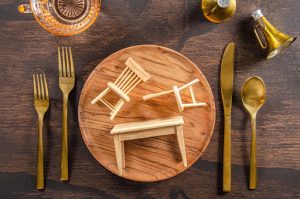
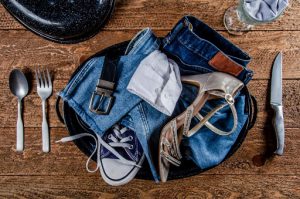
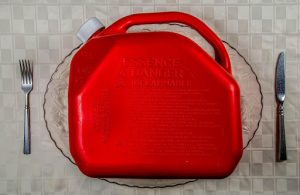
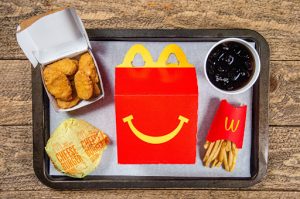
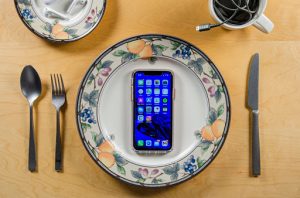

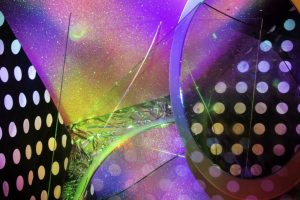

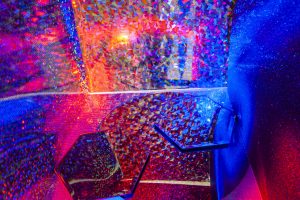
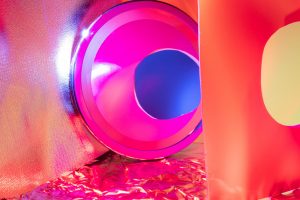
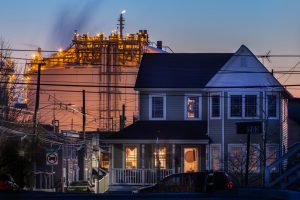
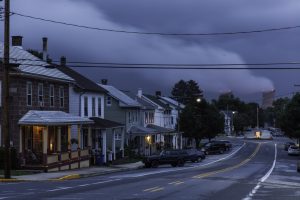
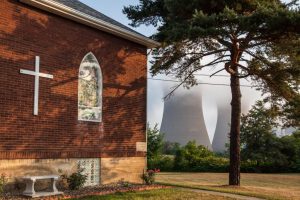
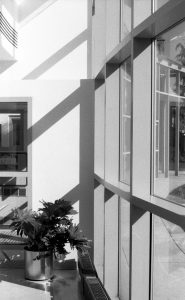
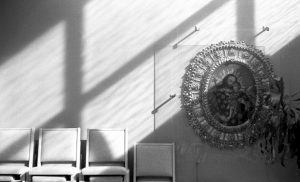
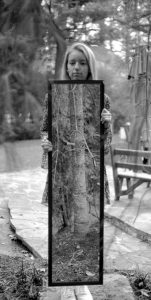
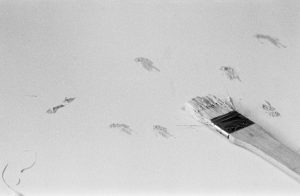

 .
. 